Morehead Family Crests. Which Morehead is your family?
You searched for 'Morehead', but there are 2 families with that name in our historic records. Do you know where your family came from, recognise the name of an ancestor or see your crest? If so, please click on your family from the list below..
SELECT YOUR CREST TO SEE AVAILABLE SILVER
AND REGISTER FOR SALE ALERTS
Morehead
Muirhead and Morehead Family History
Dr Black writing in "The Surnames of Scotland, Their Origin, Meaning, and History" in 1946 described the Muirheads as follow: "From one or other of the many localities of the name in the southern counties, perhaps from Muirhead in the barony of Bothwell. The lands and town of Mureheid in the diocese of Ross are mentioned in 1578 (RPC.), but the surname is not likely to have originated there.The first of the name on record is said to have been Sir William Muirhead of Lachope, end of the fourteenth century. Probably the same person as William de Murehede who witnessed a charter in lands of Cranshaws in 1401. (Swinton, p. xvii). Andrew Morheid was assizer in Lanark in 1432 (RAA., II, 65), David de Murhed, cleric in diocese of Glasgow, is recorded in 1471 (REG., 395), Ricardus Mwreheid, canon of Dunkeld, 1484 (RAA., II, p.211) may be Richard Murhede, dean of Glasgow in 1491 (AAPS., II, p. 270), Wilyame of Murehede is recorded in 1484 (Peebles, 31), and Thomas Murhede was parson of Lyne in 1504 (Trials, I, p*43). Thomas Murehead, quarryman at Dunkeld, 1505-15, appears in record as Moirhed, Moirheid, and Mored (Rent, Dunk.), David Muirheyd was assizer in Gowane (Govan) in 1527 (Pollock, I, p. 268) and David Mourheid was merchant burgess of Dumfries, 1668 (Inquis., 938). In common speech pronounced Murheed, Mooreheid 1624, Morheid 1691, Mureheid 1620, Muirhed 1513, Murehed 1503, Muyrheid 1498, Mwirheid 1577, Mwreheid 1484, Mwrhed 1493, Mwrheid, Mwrhied, and Mwrheyd 1522."
Sir William Muirhead's descendants retained Lauchope (variously spelt Lachop, Lauchop and Lauchope) until 1738 when this, the senior, branch of the Muirheads died out. Cadet branches emerged at Bredisholme and Herbertshire.
The Herbertshire branch changed it's name to Morehead, and the first person recorded to use the name was Thomas (or possibly William) Morehead, a descendant of the Muirheads of Lauchope in Lanarkshire (his grandfather had been factor at Lauchope) and a successful London merchant. He was one of the first residents of Cavendish Square in London and died without issue.
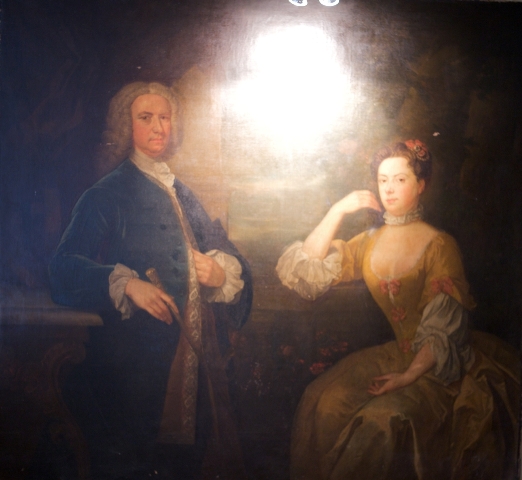
Double portrait of Mr and Mrs Thomas Morehead of Cavendish Square
His heir was his great nephew William Morehead who acquired the Herbertshire Castle estate in Lanarkshire in 1768 and married Isabella, daughter of John Lockhart of Castlehill (another prominent Lanarkshire family - see Lockhart) and great grand-daughter of Sir John Lockhart, Lord Castlehill. William Morehead was a founder member of the Royal Society of Edinburgh and was closely connected by kin, marriage and association with much of lowland Scottish society. The Herbertshire estate remained in the family hands until 1835.
William Morehead is described in the DNB entry for Francis, Lord Jeffrey, the scottish critic and lawyer (he was editor of the Edinburgh Review) as his "genial" uncle who provided a welcome home for the young Francis Jeffrey at Herbertshire Castle. "One charm of the house was a good library where Jeffrey extended his reading and self culture".
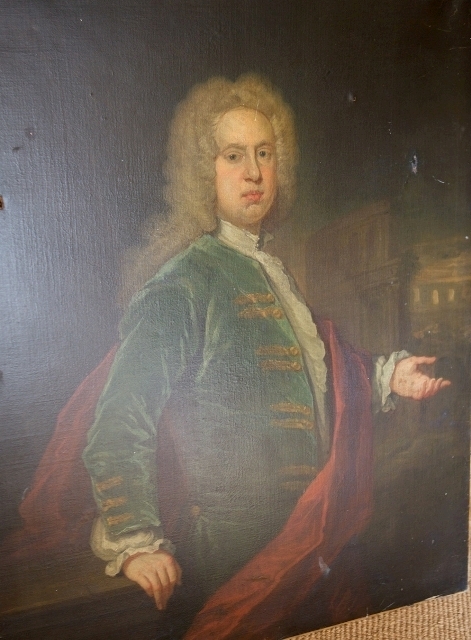
William Morehead Esq. of Herbertshire Castle by Dandridge.
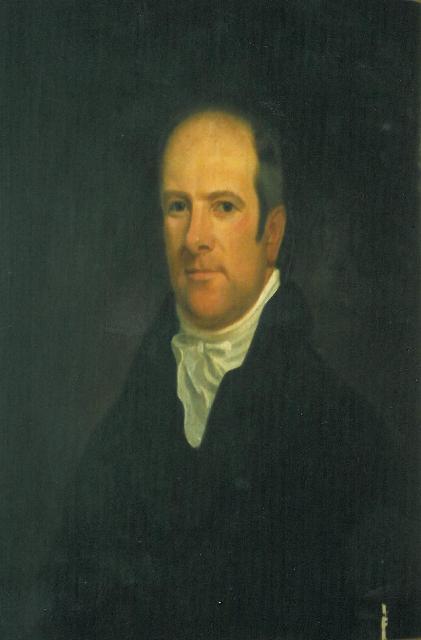
William Morehead Esq. Younger, of Herbertshire Castle
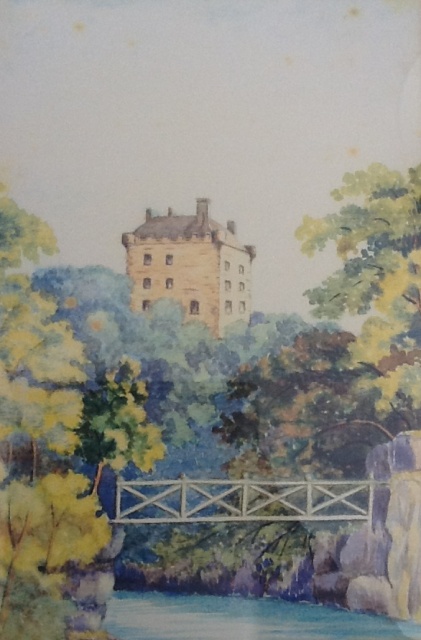
An unsigned 19th century watercolour of Herbertshire Castle from the River Carron nr Denny in the possession of the author's family. Presumably painted by a family member.
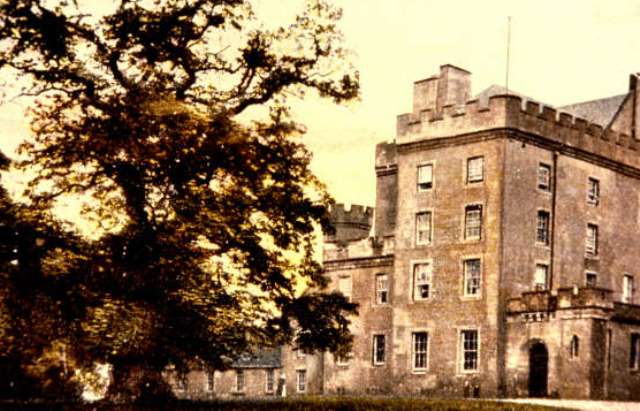
Photograph of Herbertshire Castle before its destruction by fire in 1914.
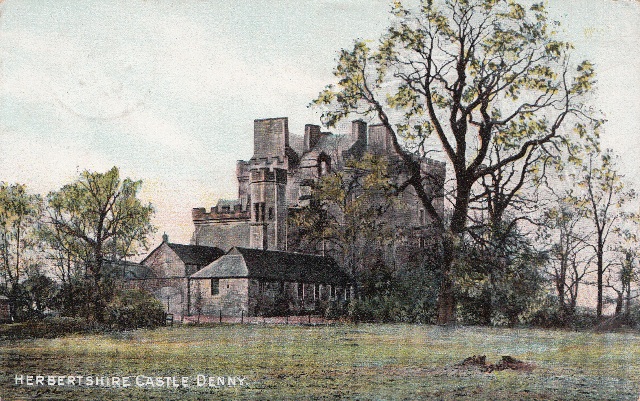
A postcard of the back of Herbertshire Castle bfore the fire. Rather an odd image to choose for a postcard in my opinion.
Subsequently other branches of the Muirheads have also changed their names to Morehead (especially in North America).
There is now a ClanMuirhead Society and their website, www.clanmuirhead.com, is a useful source of general and genealogical information on the family.
Arms were granted to William Morehead of Herbertshire by the Lord Lyon in 1788 according to Sir James Balfour Paul's "An ordinary of Arms contained in the public register of all arms and bearings in Scotland" 1903. He also records that similar arms were granted to Muirhead of Bredisholme in 1672-7.
The Muirhead of Bredisholme Arms were recorded as "argent, on a bend azure, three acorns or, a crescent for difference". The crescent being the standard cadency mark for a second son. Although Paul does not record the Arms of the Muirheads of Lauchope (the senior branch of family) I think that is safe to assume that it was their arms that the Muirheads of Bredisholme were being differentiated from.
The Morehead of Herbertshire Arms were recorded as "argent, on a bend azure, three acorns or, in chief a heart proper within a fetterlock sable". The heart within a fetterlock being a traditional symbol of the Lockharts and taken from the Lockhart arms. Although a bookplate for William Morehead in the possession of the author has a star instead of the heart in fetterlock and presumably predates the 1788 grant of arms. A star being the standard cadency mark for a third son.
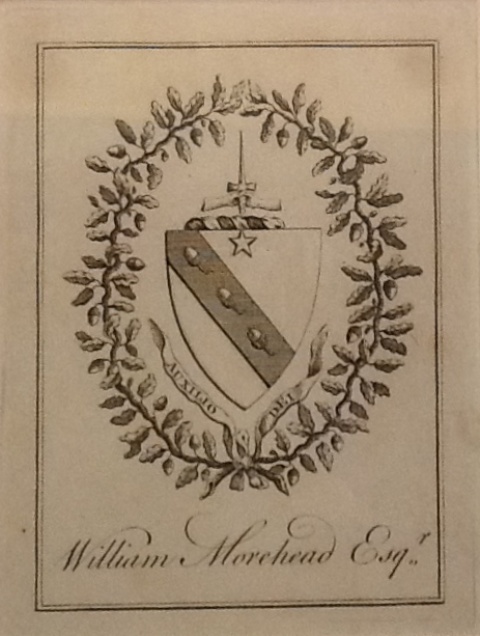
William Morehead Esq. of Herbertshire Castle. Bookplate pre 1788.
Paul does not record details of crests but Burkes General Armory records both the Muirheads of Lauchop and Bredisholme and the Moreheads of Herbertshire as sharing the same crest and motto, which has been subsequently adopted by the Clan Muirhead.
The author must declare an interest in that he is a direct descendant of William and Isabella Morehead of Herbertshire and was brought up in a house that contained their portraits and some of the contents of Herbertshire Castle.
SNBM